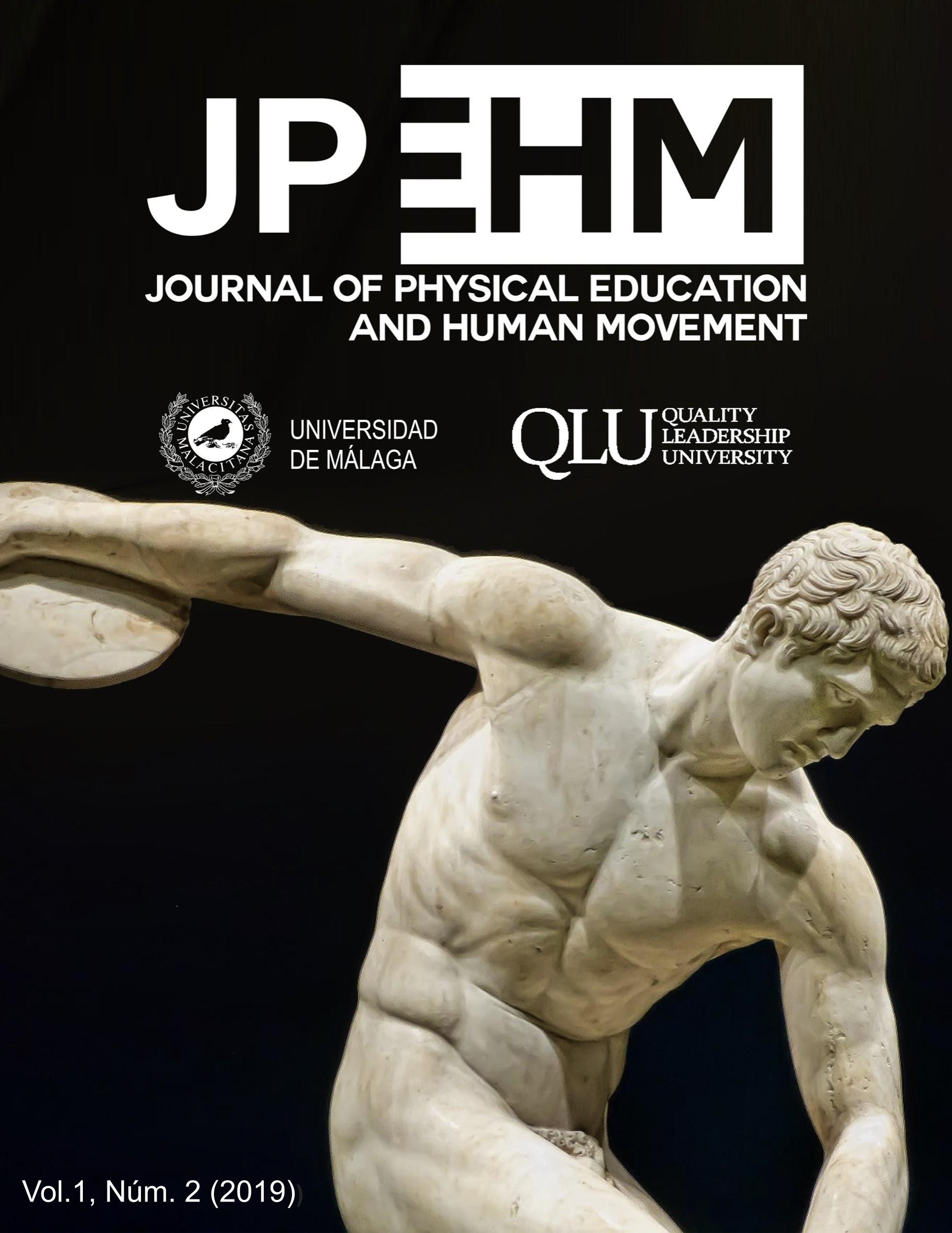A COMPARISON BETWEEN DIFFERENT TESTS FOR FUNCTIONAL THRESHOLD POWER DETERMINATION IN RUNNING
DOI:
https://doi.org/10.24310/JPEHMjpehm.v1i2.5679Keywords:
triathletes, accelerometer, estimation, paceAbstract
Introduction: power is an important variable in performance assessment. With the increasing availability of power measurement devices, it is simple to associate watts to the running Functional Threshold Power measured in watts (rFTPw) as indicated by Vance (2016). The main goal of this study is to find the most appropriate methodology for rFTPw determination. Material and methods: five different methodologies were carried out in 9 recreational triathletes (22.9 ± 4.8 years) to calculate rFTPw: 3-minute test, 3-minute – 9-minute test, 3-minute – 9-minute Stryd test, 3-laps – 6-lap test and 30-minute test. All tests were performed on an athletics track with a Stryd footpod. Results: the 3-minute – 9-minute test presented a lower average error in comparison to the mean rFTPw value (rFTPw M) of all power and pace measurement tests. Conclusions: the 3-minute – 9-minute test could be the best choice regardless of the distance or duration of the competition because rFTPw changes depending on the duration of each test. The watts associated with Critical Speed (CS) and obtained in the 3-minute test are not a valid measure, given their greater average error in both power and pace. The 30-minute test could be an alternative to determine rFTPw through the data obtained in a training session or competition of similar length. The tests with the lowest average error in power are the ones with the lowest error in pace. Therefore, pace remains the main variable to monitor external load in running.
Downloads
Metrics
References
Allen, H., & Coggan, A. (2006). Training and Racing with a PowerMeter. Boulder, CO: VeloPress.
Aubry, R. L., Power, G. A., & Burr, J. F. (2018). An assessment of running power as a training metric for elite and recreational runners. The Journal of Strength & Conditioning Research, 32(8), 2258-2264.
Austin, C., Hokanson, J., McGinnis, P., & Patrick, S. (2018). The Relationship between Running Power and Running Economy in Well-Trained Distance Runners. Sports, 6(4), 142.
Bourdon, P. C., Cardinale, M., Murray, A., Gastin, P., Kellmann, M., Varley, M. C., ... & Cable, N. T. (2017). Monitoring athlete training loads: consensus statement. International journal of sports physiology and performance, 12(Suppl 2), S2-161.
Esteve-Lanao, J., & Cejuela, R. (2011). Evaluación de la resistencia en deportes cíclicos. En Naclerio, F. J. (2011). Entrenamiento deportivo: fundamentos y aplicaciones en diferentes deportes (pp 202-203). Buenos Aires, Argentina: Médica Panamiericana.
Faulkner J. (1968). Physiology of swimming and diving. En H. Falis (ed.), Exercise physiology. Baltimore: Academic Press.
García-Pinillos, F., Roche-Seruendo, L. E., Marcén-Cinca, N., Marco-Contreras, L. A., & Latorre-Román, P. A. (2018). Absolute Reliability and Concurrent Validity of the Stryd System for the Assessment of Running Stride Kinematics at Different Velocities. Journal of strength and conditioning research.
Johnson, M. A., Sharpe, G. R., & Brown, P. I. (2007). Inspiratory muscle training improves cycling time-trial performance and anaerobic work capacity but not critical power. European Journal of Applied Physiology, 101(6), 761-770.
Lee, R. C., Wang, Z., Heo, M., Ross, R., Janssen, I., & Heymsfield, S. B. (2000). Total-body skeletal muscle mass: development and cross-validation of anthropometric prediction models. The American Journal of Clinical Nutrition, 72(3), 796-803.
Elvira, J. L. (1998). Development of a new software for the calculation of the mechanical power in the jump with force platform. Study of the reproducibility of the values obtained in various jumping tests (Doctoral dissertation, Master thesis, INEF of Castilla y León).
Marroyo, J. A. R., & López, J. G. (2015). Trabajo, potencia y energía. In Biomecánica básica aplicada a la actividad física y el deporte (pp. 149-172). Paidotribo.
Pettitt, R. W., Jamnick, N., & Clark, I. E. (2012). 3-min all-out exercise test for running. International journal of sports medicine, 33(06), 426-431.
Puleo, N. A., & Abraham, K. A. (2018). External Feedback Does Not Affect Running Pace in Recreational Runners. International Journal of Exercise Science, 11(5), 384.
Ross, W. D., & Marfell-Jones, M. J. (1991). Kinanthropometry. Physiological testing of elite athlete. Human Kinetics Books. Champaign Il.
Thomas, S., Reading, J., & Shephard, R. J. (1992). Revision of the physical activity readiness questionnaire (PAR-Q). Canadian journal of sport sciences.
Van Dijk, H., & Van Megen, R. (2017). The Secret of Running: Maximum Performance Gains Through Effective Power Metering and Training Analysis. Meyer & Meyer Sport.
Vance, J. (2016). Run with power: The complete guide to power meters for running.
Withers, R. T., Craig, N. P., Bourdon, P. C., & Norton, K. I. (1987). Relative body fat and anthropometric prediction of body density of male athletes. European Journal of Applied Physiology and Occupational Physiology, 56(2), 191-200.
Downloads
Published
How to Cite
Issue
Section
License
Aquellos autores/as que tengan publicaciones con esta revista, aceptan los términos siguientes:
- Los autores/as conservarán sus derechos de autor y garantizarán a la revista el derecho de primera publicación de su obra, el cuál estará simultáneamente sujeto a la Licencia de reconocimiento de Creative Commons que permite a terceros compartir la obra siempre que se indique su autor y su primera publicación esta revista.
- Los autores/as podrán adoptar otros acuerdos de licencia no exclusiva de distribución de la versión de la obra publicada (p. ej.: depositarla en un archivo telemático institucional o publicarla en un volumen monográfico) siempre que se indique la publicación inicial en esta revista.
- Se permite y recomienda a los autores/as difundir su obra a través de Internet (p. ej.: en archivos telemáticos institucionales o en su página web) antes y durante el proceso de envío, lo cual puede producir intercambios interesantes y aumentar las citas de la obra publicada. (Véase El efecto del acceso abierto).







15.png)
